The Top 10 Best Places To Visit In Spiti Valley
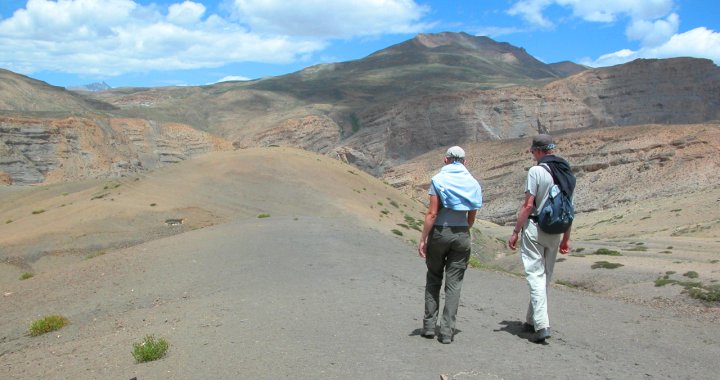
Before planning your first road trip to Spiti Valley, you must research about the top 10 best Places to visit in Spiti Valley. Spiti valley road trip takes you on your adventure journey to re-discover yourself and enjoy the natural wonders and pristine beauty that will keep you spell bound for a long time. I have been travelling to Spiti Since 1995 and my vast continuous travel experience through Spiti helps me to put the list of the top 10 best places to visit and see in Spiti Valley. Some of them are quiet famous tourist destinations and Attractions of Spiti and others are the less explored Hidden Gems and Secret places to visit in Spiti. Make sure you do not miss any of these top 10 best places to visit and see in Spiti Valley during your Spiti Valley Tour Holiday Adventure Package - 8 Nights / 9 Days, which are listed below:
1. "Mummy of Gue"
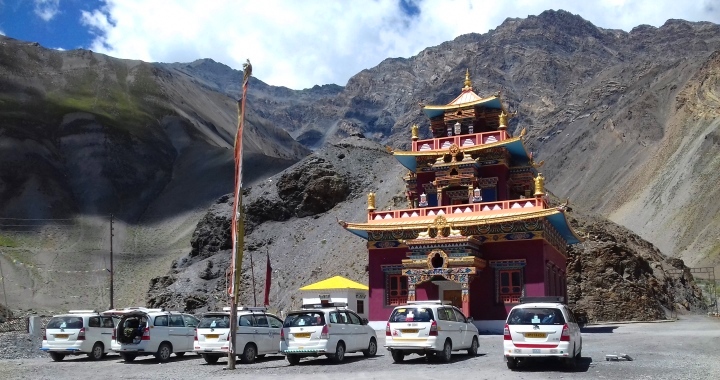
No to be missed and your Spiti Valley Tour is incomplete without a visit to this Hidden Gem and the secret place in Spiti Valley, still unknown to many. If you are travelling on a Circular 8 Nights 9 days tour to Spiti from Shimla side, Gue is the first village of Spiti that you will be visiting and is actually the last village on Indo China ( China Occupied Tibet) if coming for a short Manali to Spiti valley Chandratal Lake Tour Package.
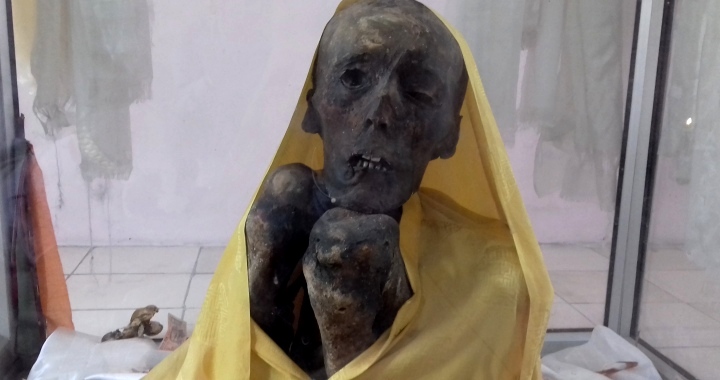
Gue is famous for its naturally preserved Mummy of a Buddhist monk (Sangha Tenzin). The 15th century old, mummified body, in a sitting meditation pose of the Buddhist monk is naturally preserved due to the cold, dry and harsh weather of Spiti valley. The Mummy of Gue village is believed to be around 600 years old, which was discovered here from a Stupa after the earth quake in 1975, while the Indo Tibet Border Force was clearing the area and building the road. Very clearly you can see the teeth, hairs and the well preserved skin on the bones of the Mummy of Gue in Spiti valley.
2. Tabo Monastery and Caves
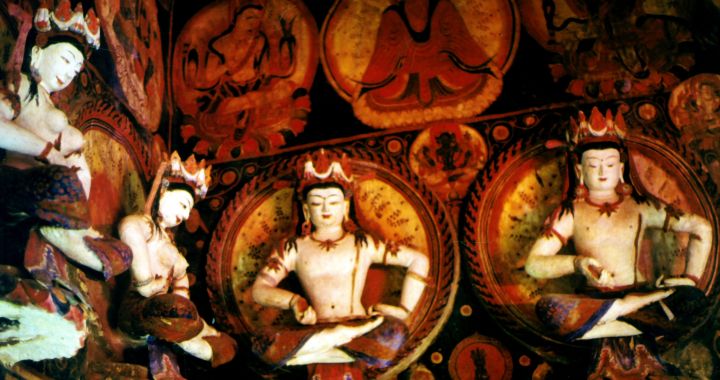
More than 1025 years old Tabo monastery, founded in 996 A.D., is the hidden Gem of Spiti Valley and also Known as the Ajanta Of The Himalayas. It preserves an extra ordinary wealth of documentation, history and culture of the centuries old Indo Tibetan culture. The Tabo monastery compound have 9 chapels and the 32 life size clay sculptures in the main Assembly hall are the major highlights to experience. It is the oldest continuously functioning Buddhist monument in the World and the Himalayas with its original decorations, iconographic and wall paintings.
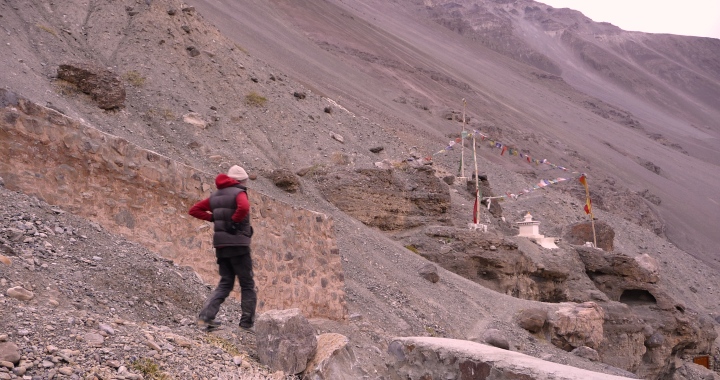
A 10 minutes hike to the nearby mountains takes you to the Tabo Caves, which were used centuries ago by the Buddhist monks for meditation and learning. Some caves were used as assembly halls for monks during learning and believed to be older than the Tabo Monastery. While travelling from Tibet Buddhist monks and Caravans used to halt at Tabo before heading to Zanskar and Ladakh. One of the caves up there is also the part of Tabo Monastery complex that is now under the Archaeological Survey Of India ( ASI). Panoramic views of Tabo village and the monastery can be had from the mountains where Caves are located.
3. Dhankar Village, Fort, Monastery and Lake
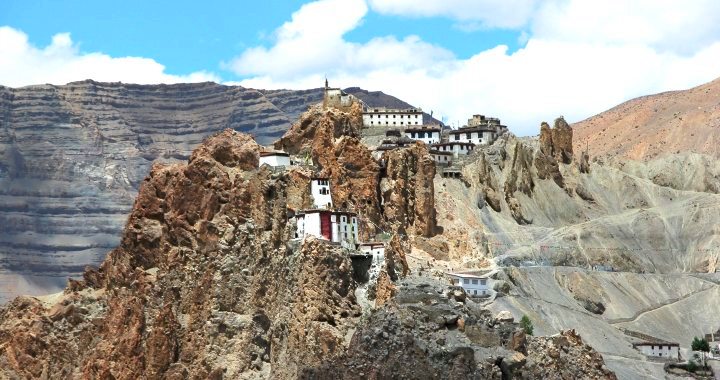
Astoundingly settled in between the rocks on a cliff - the most dramatic settings of Spiti, is the village of Dhankar with its fort on the top and monastery, which provides commanding views of the Spiti and Pin rivers along with the entire valley. As its name Dhankar "Dhank or Dhang" means Cliff and "Kar" means Fort. Centuries ago Dhankar used to be the Capital of Spiti. At present, it is a small pretty village on a hill with an open view of valley down the side. Traditional houses, Majestic Mountain views with vast expanses of Spiti Valley make Dhankar a special place in the list of the top 10 best places to visit and see in Spiti Valley, which should not be missed during the Spiti road trip.
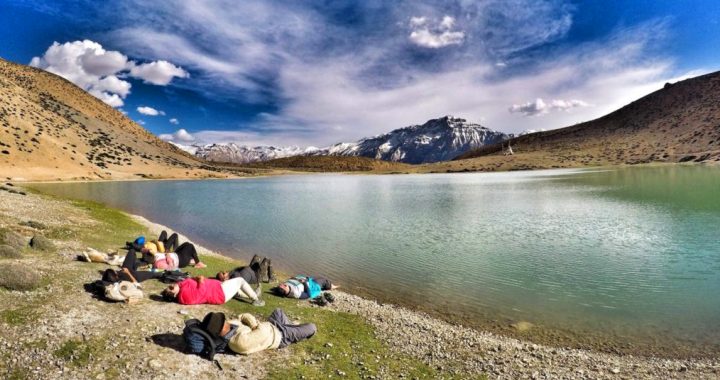
There is a fresh water Lake about a 2.5 kms hike (1hrs each side, trek uphill) above Dhankar village at a height of 13,500 feet. After the village it gets the Name Dhankar Lake and it’s a place to explore Hidden Gem and the secret Wonders of the Nature in Spiti valley. Dhankar village is ideal for traditional home stays where you can enjoy the hospitality of the locals.
4. Kungri Monastery, Mud Village and Pin Valley
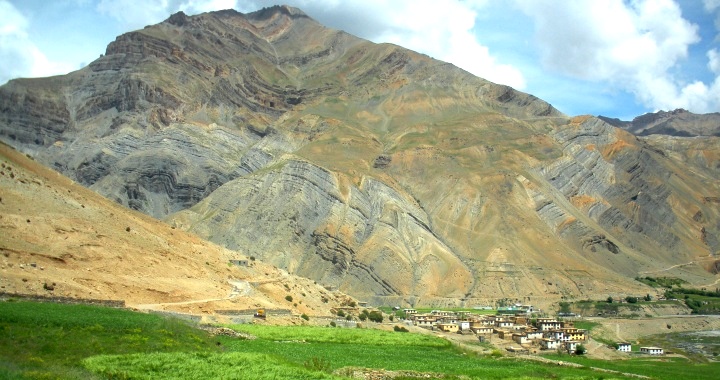
Mud also spelled Mudh Village is the last village in Pin Valley, closer to The Pin National Park which is the home to a variety of rare animals like the Snow Leopard, the ibex, the Himalayan blue sheep and the Himalayan Thar along with many species of Himalayan birds and pheasants. Mud Village is one of the Hidden Gems and the secret places to visit in Spiti Valley. The stunning landscapes, colourful mountains with natural formations, traditional houses with prayer flags, green fields, pin river flowing through the valley will not disappoint you and is in the list of the top 10 best places to visit in Spiti Valley, where you can spend relaxing time with your loved ones. There are many trekking trails around Mud and it is also the starting of the famous Bhaba Pass Trek which joins this part of Spiti valley to Kinnaur over the Bhaba Pass. Mud village has become quite popular among the travellers in the past couple of years. Tara House Home Stay is a lovely place to stay and enjoy the hospitality, food and pristine nature of Mud and Pin Valley.
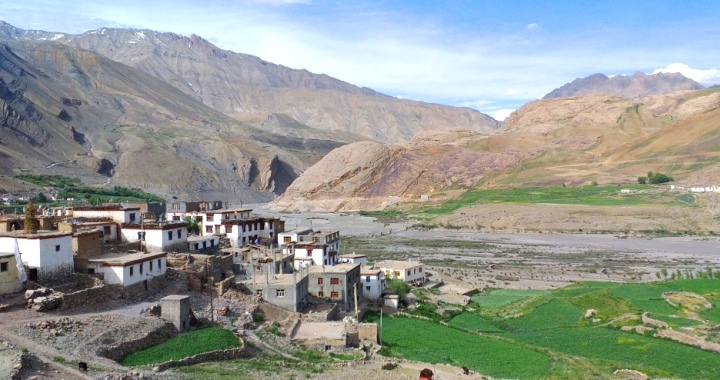
Sagnam village, 11 kms before Mud is another traditional village of the valley and Kungri Monastery near to Sagnam village in Pin Valley belongs to Nyingma sect of Buddhism. The Annual Cham dance festival is the major attraction of the Kungri Monastery held during July. The old part of the monastery was built during 1330. The monastery had a great collection of Thangka Paintings and relics.
5. Key Monastery
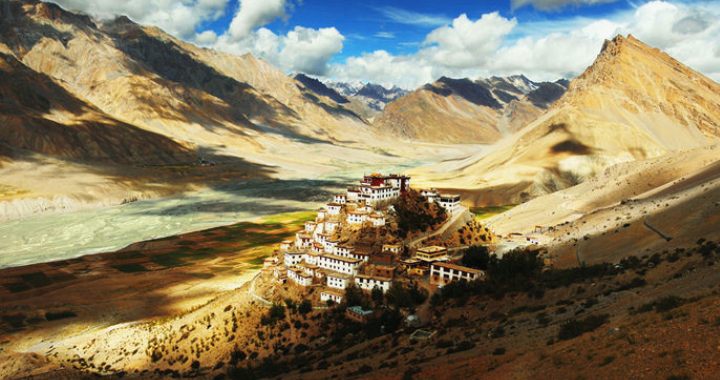
Above the left bank of Spiti river, 12 kms above from Kaza, the Key monastery is the largest monastery in the Spiti valley. It belongs to Gelugpa sect of Buddhism and holds a powerful impact over the most populous part of the Spiti valley. It is also known for its beautiful murals, Thangka paintings, rare manuscripts, stucco images and wind instruments that form part of the orchestra whenever Cham (the traditional Tibetan dance) is enacted in the monastery during the summer Monastic festival. It also has nice ambience and small caves for meditation inside the Monastery complex. One can enjoy the magnificent views of the Spiti valley from The Key Monastery.
6. Kibber, Gette and Chicham Village
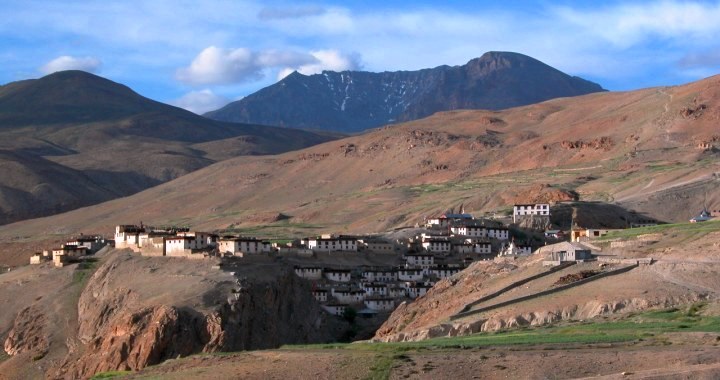
8 kms above the Kee monastery, Kibber village where on arrival one is greeted by traditional houses, lush green fields which look strikingly refreshing against the arid backdrop of the snow capped mountains and peaks. Before Comic village in Spiti, Kibber used to be the highest village. One can hike from Kibber to Gette Plains (1.30 hrs), where usually one is lucky to spot the rare Himalayan wildlife including the groups of Himalayan Blue Sheep and the Snow Ibex.
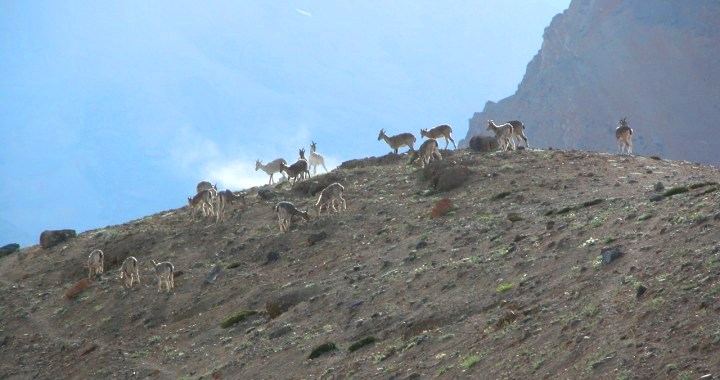
Kibber - Gette is the part of The Kibber Wildlife Sanctuary famous for the red fox, woolly hare, pika, the very rare stone marten and the Snow Leopard which can be seen in many of these villages specially during the winters when due to heavy snowfall Snow Leopards come to lower altitudes for hunting sheep and other wild animals.At Gette Plains you can hike to the mountain tops towards the valley from where you have beautiful views of Key Monastery and the valley below. One can even walk downhill from the Gette plains to Key Monastery (45 minutes). Eight rare and endangered medicinal plant species have been found in this sanctuary.
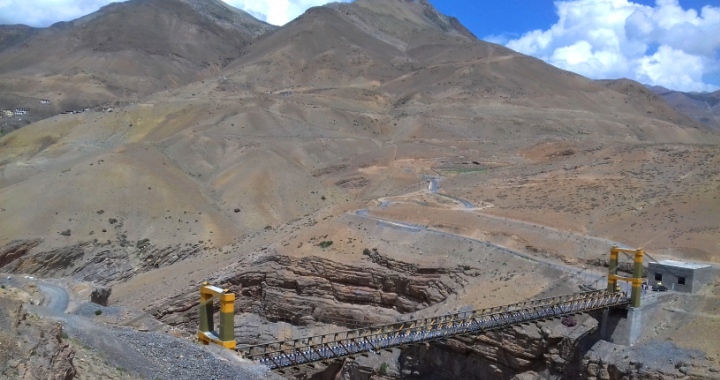
From Kibber you can even drive to Chicham village through a newly built suspension bridge on the Kibber Chicham Gorge. This pretty traditional village recently became approachable for the tourists where you can enjoy the natural landscapes and interaction with locals. Kibber and Chicham village offers home stays run by the locals and Gette is a less explored Hidden Gems and Secret places to visit in Spiti Valley.
7. Hikkim - Comic and Langza - World's Hightest Villages in Spiti Valley
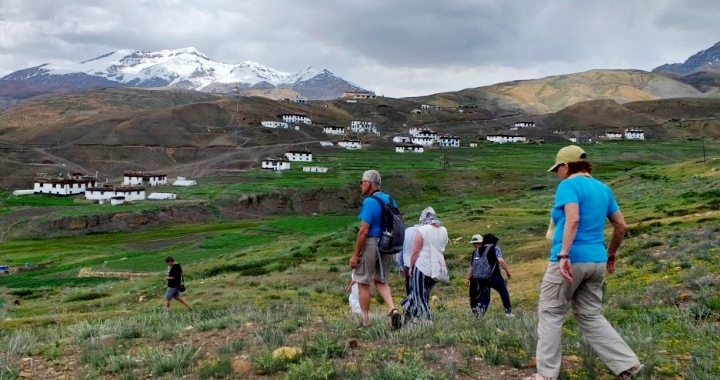
On a Circular route above Kaza, you can visit 3 villages Hikkim 4,400 metres - famous for the World's highest post Office, Komic (Comic) 4,587 metres - the World's highest village and Langza 4,400 metres the most prettiest village of Spiti and is also the part of the most fossil rich areas in the world by the Geological Survey of India and the Geological Society of America.
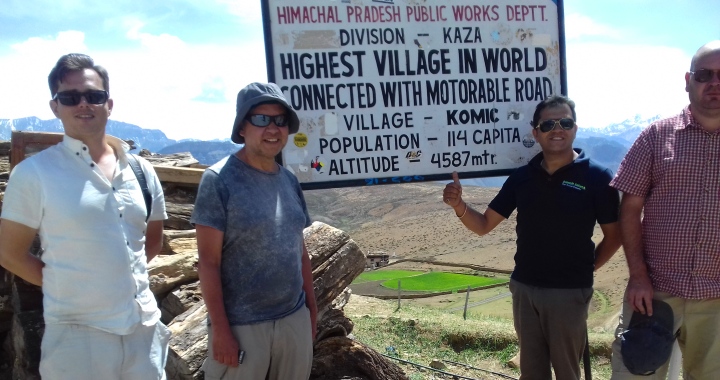
You can spend a post card back home or to your loved ones from the World's highest post office at Hikkim and can visit the Lundup Tsemo Gompa a Buddhist monastery at the World's highest village Comic. You can go for a nature walk at Langza, have lunch with the local family, visit the village monastery and the Statue of Bhuddha overlooking the Himalayas. Charming location of these villages make it in list of the top 10 best places to visit and see in Spiti Valley.
8. Lingti Valley, Demul, Lalung - The Hidden Gems and Secret Places in Spiti Valley
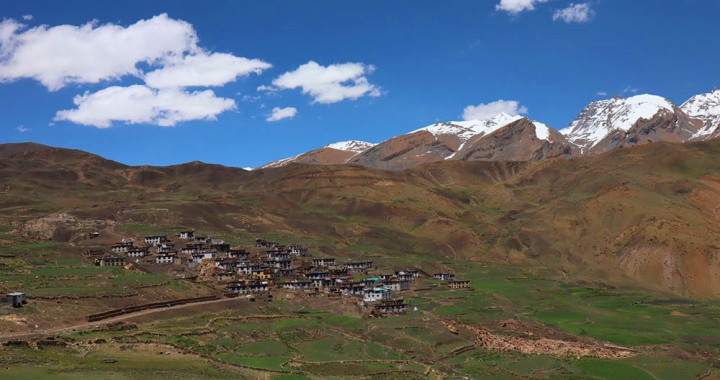
Many of the villages in and around Lingti valley are still less explored and remain the Hidden Gems and Secret places to visit in Spiti Valley. Villages like Hikkim, Comic, Langza are the part of Lingti valley and are approachable by tourist taking tour packages to Spiti Valley. Whereas, on the other hand Demul and Lalung villages are still out of reach for many tourists. The Lingti Valley is a living geological museum and is the longest (60km) and largest side valley of Spiti. There is a village to village trek also covering Lingti valley and can start from Dhankar village to Lalung, Demul, Comic, Hikkim, Langza finishing further at Kaza.
9. Kaza
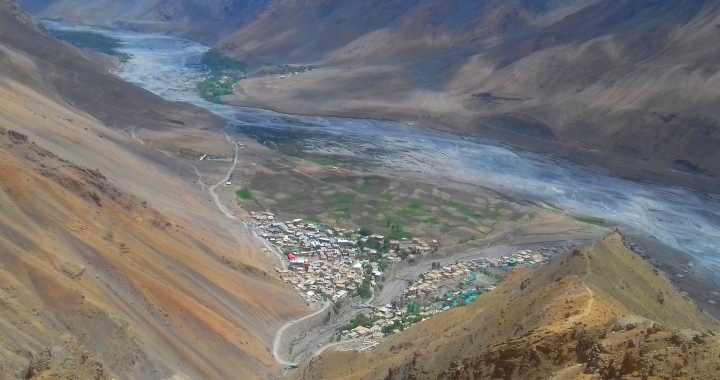
Kaza is the administrative headquarters of Spiti. It has a market place, medical facilities (hospital), a pump station, hotels and guest houses, Cafes. You can also shop local handicrafts and food products in the local market at Kaza. It also serves as the base for excursions to the nearby villages and monasteries including Key, Kibber, Lagnza Hikkim- where you visit the World’ highest Post office (4,400 metres), and Comic (4,587 metres) which is now the world's highest village joined to a motorable road are the top 10 best places to visit and see in Spiti Valley.
10. Kunzum Pass and Chandratal Lake
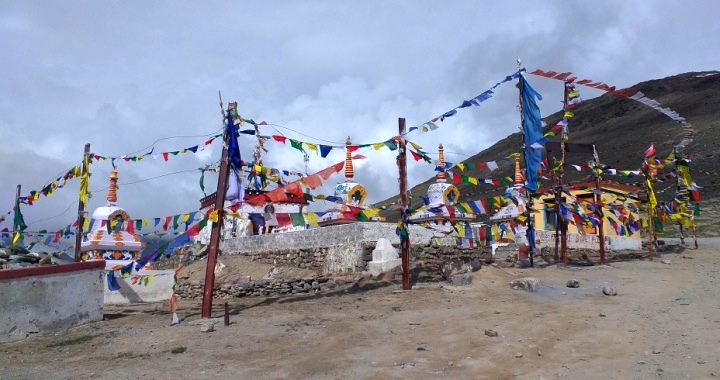
Kunzum Pass is the gateway from Spiti to Lahaul valley or to Manali from Spiti Valley. The Bara Shigri glacier can be seen in front of the pass. Snow covered mountains and glaciers can be seen throughout the year from the Kunzum Pass which is open in early June to mid October depending on the snowfall. There is a temple dedicated to Goddess Kunzum, where each vehicle stops and takes blessing of the Goddess for their safe journey.
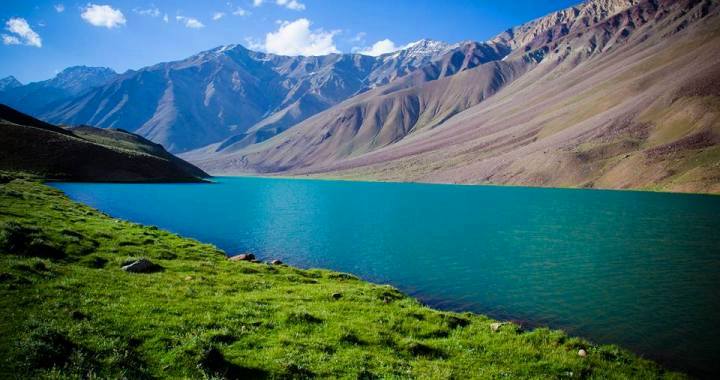
In the wilderness of Spiti valley Chandra Tal Lake also know n as the "Lake of the Moon", as on full moon night it appears as if the moon and the stars have come down to the lake. At full moon night the reflection of the moon and stars can be seen in lake water. It is the largest and broadest lake in the region (1 skm. in length). This clear blue water lake lies in a broad grassy plain with a presence of rugged mountains, snow covered peaks and it presents a picturesque beauty of nature to the visitors. It is approachable by a rough road from Batal (15 kms), just below the Kunzum Pass or either one can hike from Kunzum Pass (6 kms – 3 hrs) to the beautiful Lake with a few ups and downs before finally you go down to the Lake.
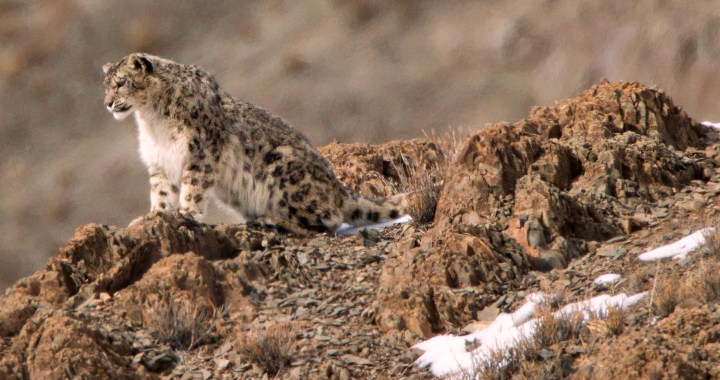
Chandratal Lake is the part of Chandratal Wildlife Wet Land and Biosphere Reserve is also a natural habitat of Snow Leopards and many other rare Himalayan species like the Snow cock, Chukor, Black Ring Stilt, Kestrel, Golden Eagle, Chough, Red Fox, Himalayan Ibex, and Blue Sheep. It is among the 42 Ramsar Sites of international importance in India. Fixed tented accommodations are provided by the locals from Mid June to Mid September, just 2 kms before the Lake. Driving or camping at the lake is not allowed. The remote location of the lake with stunning landscapes makes it in the list of the top 10 best places to visit in Spiti Valley.
Plan your Spiti valley Tour with Professional Reliable and Travel Experts
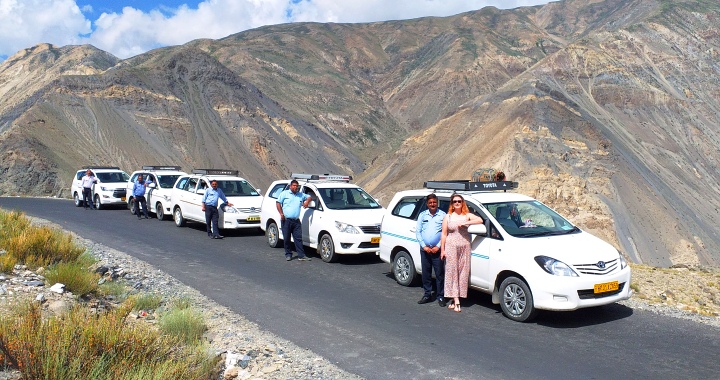
Summit Safari India is a Shimla based professional, reliable travel experts who help you to plan a perfect Spiti valley tour covering the Top 10 Best Places and the Less Explored Hidden Gems and Secret Places to visit in Spiti. Summit Safari India, as the responsible travel company is promoting sustainable tourism in Spiti Valley India, where our eco tourism and community based tourism provides you the experience of the local culture, food and the insight to the day to day life of the locals from very closely and on the other hand it benefits the locals directly. We as the Spiti Travel Expertise listen to your interests, make our suggestions about special places, and then handcraft a personalized itinerary based on what your requirements, interests and available time to travel, with you. We'll work with you until you’re satisfied with every detail of your Spiti Holiday Tour. You can contact us on WhatsApp +91 9805051102, Email: vishal@summitsafari.com






